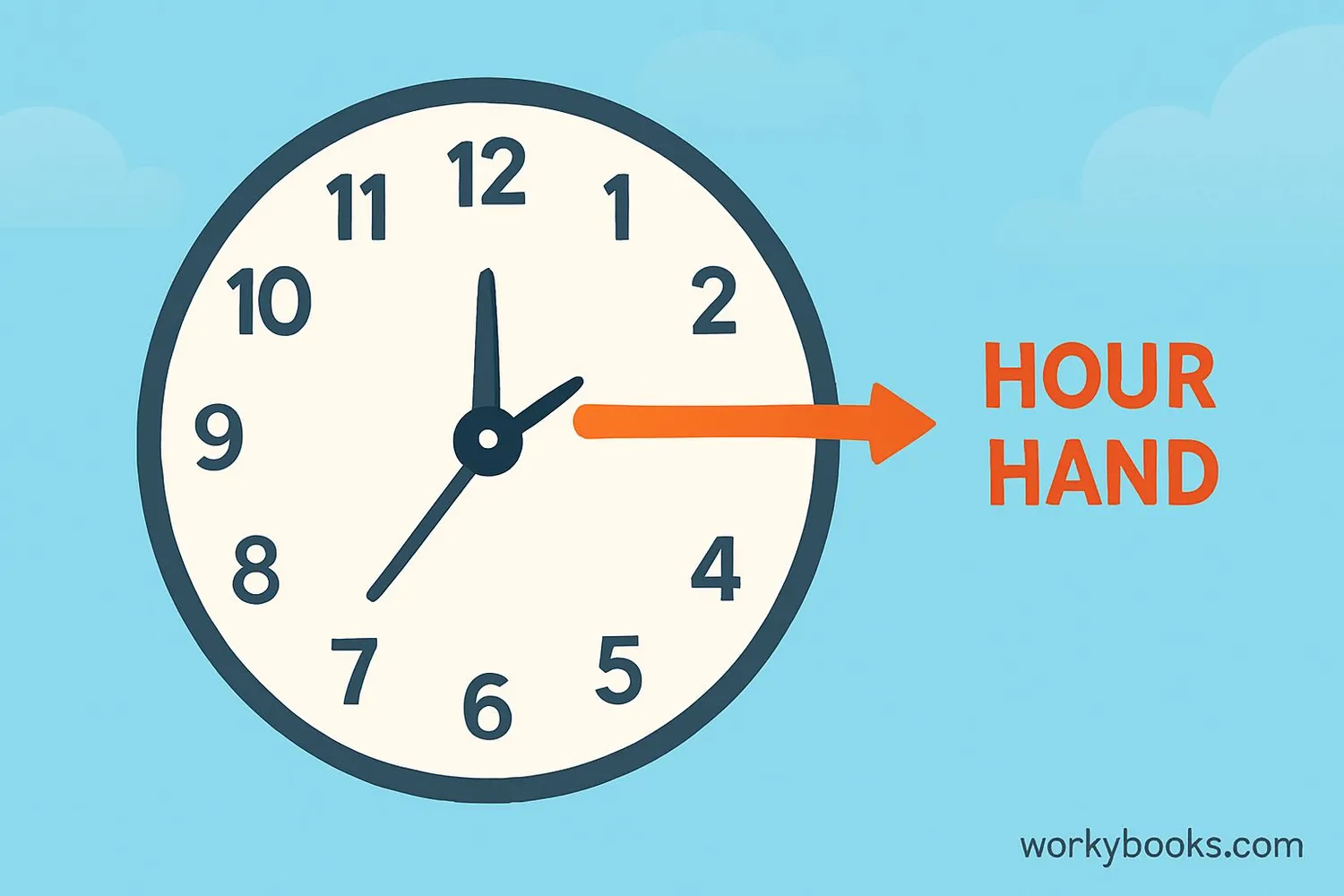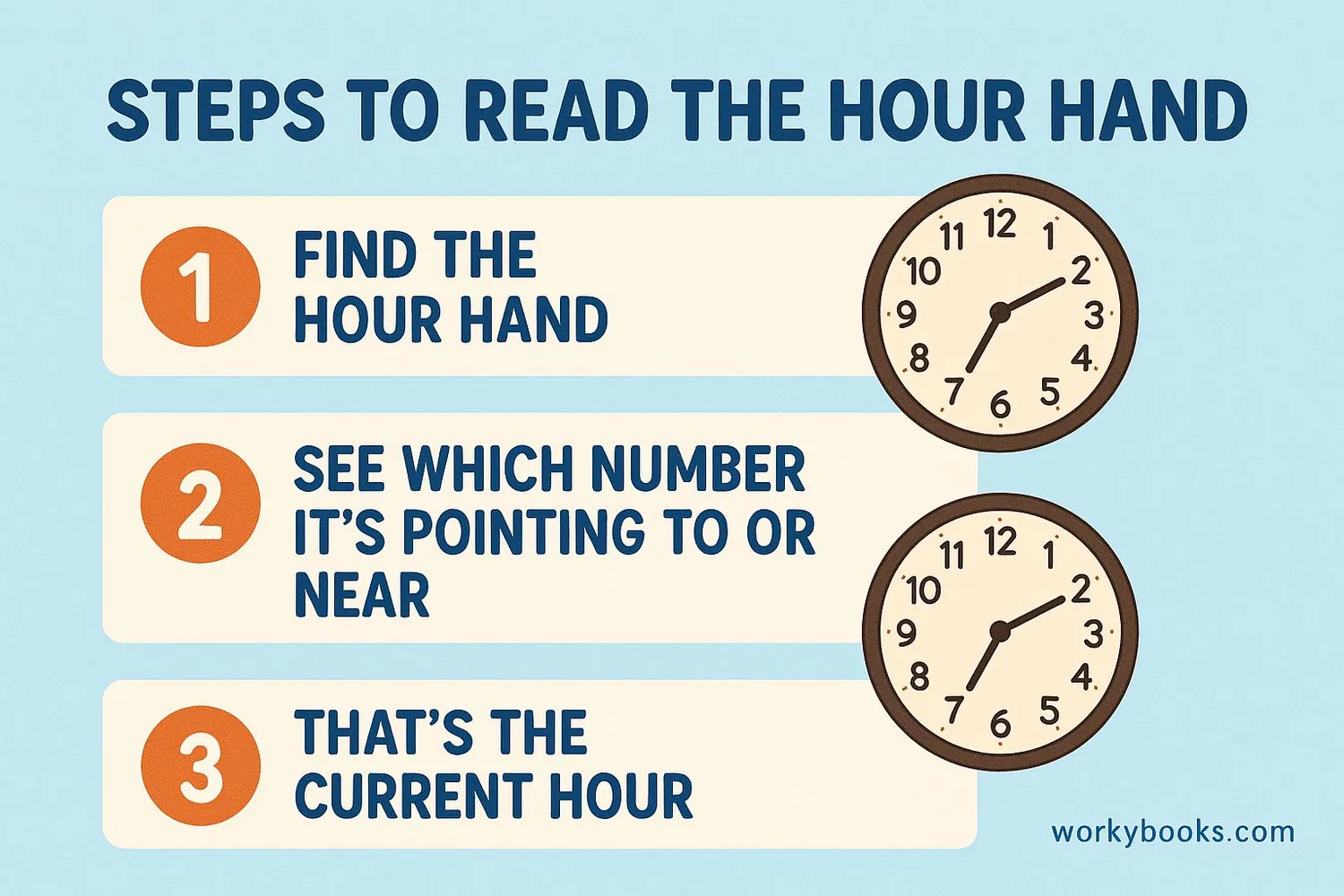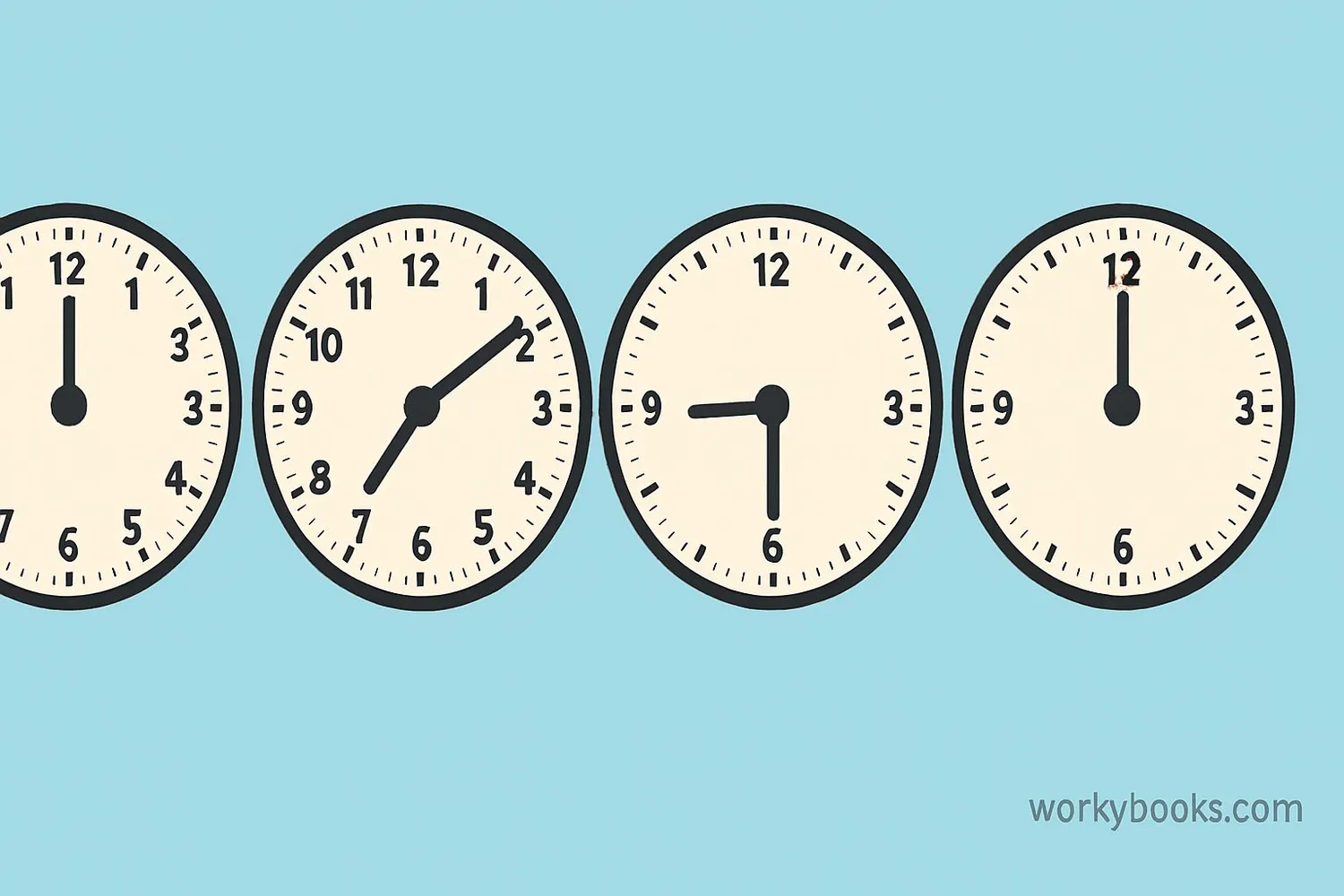Hour Hand - Definition, Examples, Quiz, FAQ, Trivia
Learn to tell time by understanding the hour hand on analog clocks with explanations and practice activities
What is the Hour Hand?

The hour hand is the shorter hand on an analog clock. It moves slowly around the clock face and shows us what hour it is.
On most clocks, the hour hand completes one full circle every 12 hours. As it moves between numbers, it shows us parts of an hour too. For example, when the hour hand is halfway between 3 and 4, it means it's half past 3 o'clock.
The hour hand works together with the minute hand (the longer hand) to tell us the exact time. Learning to read the hour hand is the first step in telling time on an analog clock.
Key Concept
The hour hand is the shorter hand on a clock that shows what hour it is. It moves slowly as time passes.
How to Read the Hour Hand

Reading the hour hand is simple once you know how:
Step 1: Look at the clock and find the shorter hand. This is the hour hand.
Step 2: See which number the hour hand is pointing to or is closest to.
Step 3: The number that the hour hand has most recently passed is the current hour.
In this clock, the hour hand is pointing at the 4 (even though it's not shown with numbers, it would be between 3 and 4). This means the time is after 3 o'clock but before 4 o'clock.
Remember: The hour hand moves gradually between numbers. When it's exactly on a number, that's the exact hour. When it's between numbers, we need to look at the minute hand to know the exact time.
Remember
The hour hand moves slowly. It takes one hour for the hour hand to move from one number to the next on the clock.
Examples of Reading the Hour Hand

Let's practice reading the hour hand with some examples:
Example 1: When the hour hand is pointing directly at the 3, it is 3 o'clock.
Example 2: When the hour hand is exactly halfway between 3 and 4, it is 3:30 (half past 3).
Example 3: When the hour hand is a little past the 5 but not yet to the 6, the time is after 5 o'clock but before 6 o'clock.
Example 4: When the hour hand is very close to the 8 but hasn't reached it yet, the time is still after 7 o'clock but before 8 o'clock.
To know the exact time, we always need to look at both the hour hand and the minute hand. But the hour hand tells us which hour we're in.
Practice Tip
Look at clocks around you and practice identifying what hour the hour hand is showing. Remember that when it's between numbers, we're in that hour.
Time Telling Practice Quiz
Test your understanding of the hour hand with this 5-question quiz. Choose the correct answer for each question.
Frequently Asked Questions
Here are answers to common questions about the hour hand:
Time Trivia
Discover interesting facts about clocks and time:
Sundials
Before clocks were invented, people used sundials to tell time. The shadow cast by the sun acted like an hour hand, moving throughout the day.
24-Hour Clocks
Some clocks use a 24-hour format instead of 12-hour. On these clocks, the hour hand goes around the clock face only once each day instead of twice.
World's Oldest Clock
The world's oldest working clock is in Salisbury Cathedral in England. It was made in 1386 and still works today!
Clockwise Direction
Clock hands move in a "clockwise" direction because that's the direction shadow clocks moved in the Northern Hemisphere, where clocks were invented.


